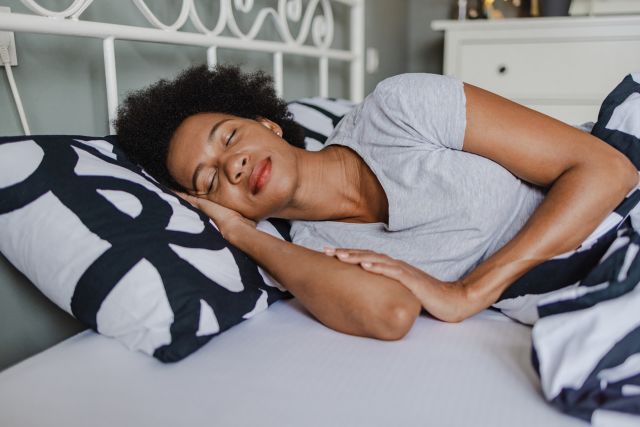Updated on May 19, 2025.
Sleep should leave you feeling rejuvenated. But if you’re in pain you’re probably not getting quality rest. In fact, 57 percent of adults in the United States with regular pain wake up at least three times each night, according to a 2022 survey by the National Sleep Foundation.
A poor night’s sleep can make you moody and unfocused—and it can also increase your sensitivity to pain. Here are some tips to help you doze off and stay asleep, no matter what hurts.
If your shoulder hurts, switch sides
Shoulder pain is generally worse at night, says Martin Redish, MD, an orthopedic surgeon in Chattanooga, Tennessee. “Any kind of shoulder pain hurts more at night because you lie flat and blood rushes to the area,” he says. Try sleeping on the unaffected side while hugging a pillow. If you’re a back sleeper, put a pillow under the aching shoulder. Propping yourself up so you’re not lying flat can also help alleviate nighttime shoulder pain, Redish says.
If your wrist hurts, prop it up
Carpal tunnel syndrome, which causes pain or numbness in the wrist, hands and fingers, has a reputation for hurting more at night. For pain from carpal tunnel, sleep on your back, with your arm propped up by a pillow. You can also use a night splint for the affected wrist(s), says Redish.
If your back or neck hurts, pick a firm mattress
Does back or neck pain keep you up at night, or even out of work the next day? You’re not alone. Low back pain is the top cause of disability worldwide, according to the World Health Organization. And research suggests that in the U.S., about one in three adults report neck pain in any given year.
Sleeping on a firm mattress is key to relieving back pain, says Redish. Sleeping on your side with your knees drawn up relieves pressure on the spine. For neck pain, use pillows to keep your neck straight, and avoid sleeping on your stomach with your head turned.
If your hip hurts, sleep on the other side
If hip pain is waking you or keeping you up, sleep on the side that doesn’t hurt and keep a pillow between your legs. One common cause of hip pain is arthritis, which causes pain, tenderness, and swelling in joints. There are many different kinds of arthritis, but the most common by far is osteoarthritis, which affects more than 33 million U.S. adults, according to the Centers for Disease Control and Prevention (CDC). Getting treatment from a healthcare provider (HCP)—which often includes medication—can help ease arthritis pain in general and help you get to sleep.
If your knee hurts, squeeze a pillow
“Knee pain, especially with degenerative arthritis of the knee, often gets to the point where it can hurt at night,” says Redish. Your best bet is to sleep on your side with a pillow between your legs. The pillow will cushion your knees so they don’t rub together, says Redish. It’ll also reduce pressure on the knee while you sleep.
The golden rule of sleep position
When it comes to pain and sleep position, the golden rule is to do what works for you. “There’s no secret position,” says Redish. The most comfortable arrangement will be different for everyone.
If pain starts keeping you up at night, try different positions and reach out to an HCP. They can recommend additional strategies and treat any health conditions that may be affecting your sleep.






